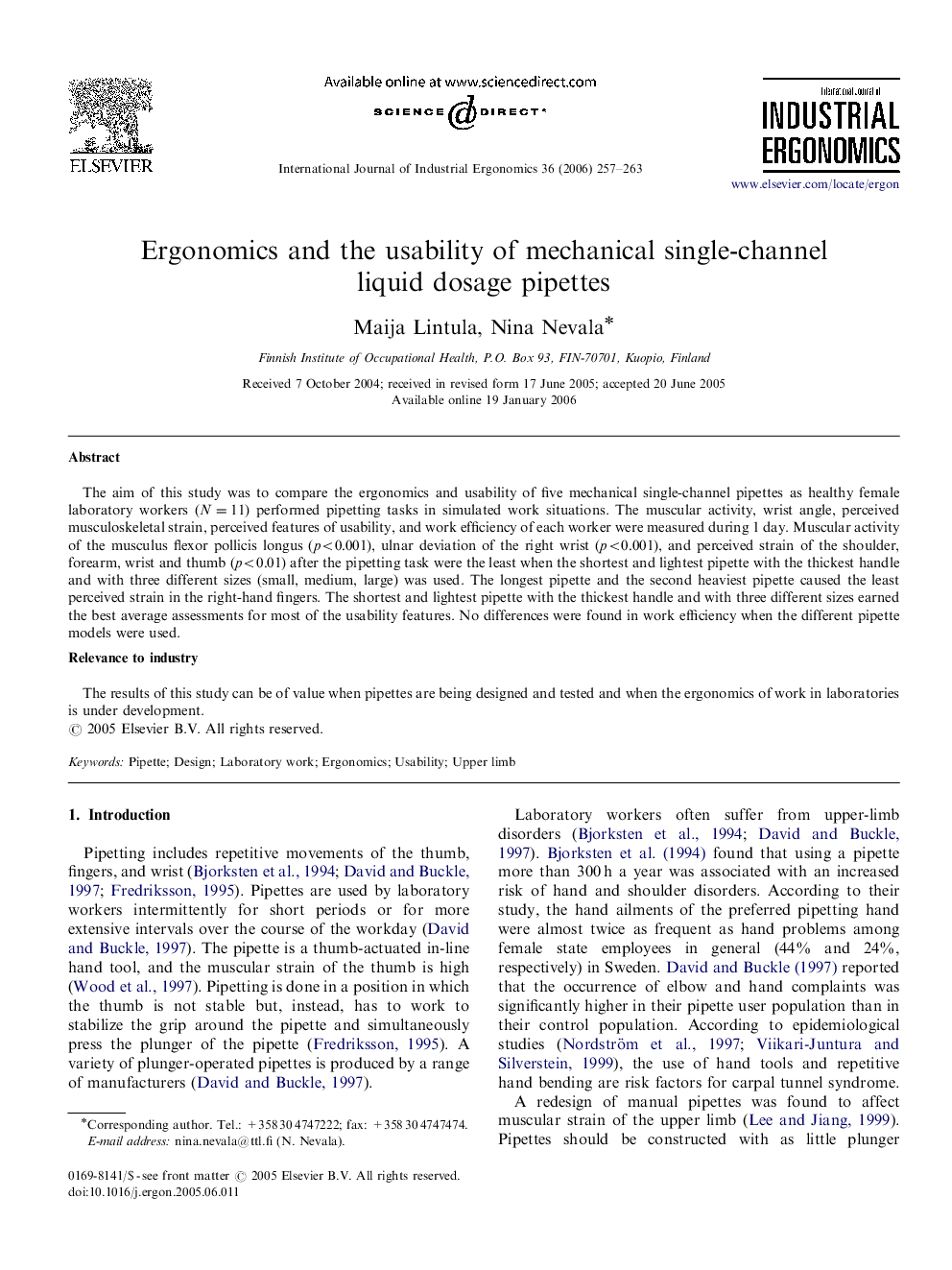| Article ID | Journal | Published Year | Pages | File Type |
|---|---|---|---|---|
| 1097062 | International Journal of Industrial Ergonomics | 2006 | 7 Pages |
The aim of this study was to compare the ergonomics and usability of five mechanical single-channel pipettes as healthy female laboratory workers (N=11N=11) performed pipetting tasks in simulated work situations. The muscular activity, wrist angle, perceived musculoskeletal strain, perceived features of usability, and work efficiency of each worker were measured during 1 day. Muscular activity of the musculus flexor pollicis longus (p<0.001p<0.001), ulnar deviation of the right wrist (p<0.001p<0.001), and perceived strain of the shoulder, forearm, wrist and thumb (p<0.01p<0.01) after the pipetting task were the least when the shortest and lightest pipette with the thickest handle and with three different sizes (small, medium, large) was used. The longest pipette and the second heaviest pipette caused the least perceived strain in the right-hand fingers. The shortest and lightest pipette with the thickest handle and with three different sizes earned the best average assessments for most of the usability features. No differences were found in work efficiency when the different pipette models were used.Relevance to industryThe results of this study can be of value when pipettes are being designed and tested and when the ergonomics of work in laboratories is under development.
